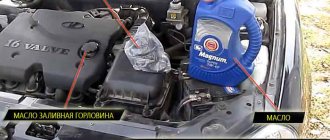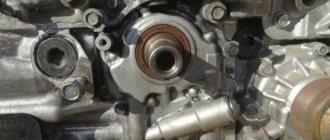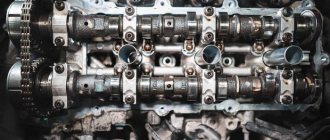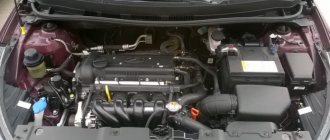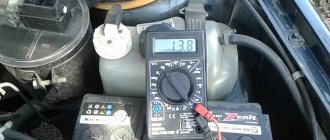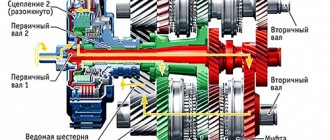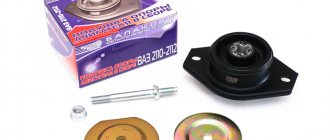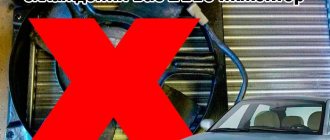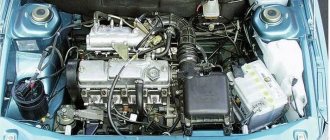Cars from domestic manufacturers have always had plenty of problems. Yes, in the early and mid-80s of the last century, the Russian automobile company AvtoVAZ made a splash with its technologically equipped and affordable copies - and nothing has changed since then. True, nothing has changed in the bad sense of the word.
The same technologies are used: low-power, albeit high-resource engines, primitive design and interior, low-quality interior materials, unpleasantly surprising safety test results. And this is not to mention the fact that the list of problems remains the same, despite the fact that every few years each model range undergoes a deep restyling. And this, for a second, is in 2022. In fact, the VAZ is only suitable as a means of transportation “from point A to point B”, because comfortable movements on it are completely excluded.
Thematic forums are constantly replenished with new problems of the so-called pelvis valves: either the turn signals stopped turning on, or the stove broke for no reason, or even you can’t go anywhere with your iron friend - it doesn’t want to start.
What to do if the VAZ-2110 takes a long time to warm up
Cars from domestic manufacturers have always had plenty of problems. Yes, in the early and mid-80s of the last century, the Russian automobile company AvtoVAZ made a splash with its technologically equipped and affordable copies - and nothing has changed since then. True, nothing has changed in the bad sense of the word.
The same technologies are used: low-power, albeit high-resource engines, primitive design and interior, low-quality interior materials, unpleasantly surprising safety test results. And this is not to mention the fact that the list of problems remains the same, despite the fact that every few years each model range undergoes a deep restyling. And this, for a second, is in 2022. In fact, the VAZ is only suitable as a means of transportation “from point A to point B”, because comfortable movements on it are completely excluded.
What to do if your car overheats in a traffic jam
When driving a car for a long time in a lower gear, the engine operates with increased power, which in itself leads to overheating. Add to this the lack of oncoming air flow necessary to cool the radiator. What to do?
The main thing is not to panic. Short-term overheating is not terrible, but if you see that the car is not cooling down, it’s time to act.
- Important - do not turn off the engine unless absolutely necessary. Exactly - without extreme. A stalled, overheated engine is an almost 100% guarantee of repair. It will take quite a long time to describe what is happening in the engine in this case (rotating the liners together with the crankshaft, when the engine is subsequently started - the least of the possible troubles), just take it on faith.
- Important - do not think about pouring water on the engine or pouring cold water into the radiator. The result is the same - repair. Moreover, you can try so hard that you cannot do without replacing the block and cylinder head. Another “beauty” of cold water is microcracks inside the block. Finding and eliminating will be very, very difficult, if not impossible. The car has overheated - try to pull over to the side of the road. If it doesn’t work out, don’t panic and don’t pay attention to those around you – it’s important for you to save the engine.
- Stop at idle, turn the heater on full, and wait. If after 5-10 minutes the situation does not improve, turn off the engine. It’s a good idea to open the hood; the main thing in a panic is not to forget to set the car’s parking brake.
- The only reason to turn off the engine right away is clouds of steam coming from under the hood. Most likely, the cooling pipe has burst, and further operation of the engine will only worsen the situation.
This is what it looks like, engine overheating, if you look closely. Now you know why the engine gets hot and how to deal with it.
Long engine warm-up on a VAZ-2110 with 16 valves
The reason that the temperature of the internal combustion engine remains the same, despite a fairly large amount of time spent on warming up, in most cases lies in a malfunction of the thermostat. In such cases, one of its valves gets stuck due to a defect and does not change position even after the ignition is turned on. Thus, the circulation of the working cooling fluid will always occur in a large circle, preventing the engine from reaching the optimal operating temperature.
Now a little lifehack. Take the key (17 or 19) in your hands and knock on the thermostat, but not too hard (don’t break it). This often helps, but not for long. The best way to repair it is to replace it.
It may seem to some that this is not a problem at all, especially in the summer, since the lower the temperature of the internal combustion engine, the more the risk of overheating and failure is eliminated. However, precisely because the operating temperature range has not been reached, all propulsion systems do not operate efficiently enough. Sharp acceleration in such cases is unacceptable - wear of parts at low temperatures increases many times over. In addition, the interior of the VAZ-2110, the thermal insulation of which deserves far from the most flattering words, needs to be thoroughly warmed up, especially when it comes to winter use. And if the thermostat malfunctions, the air emanating from the dampers simply will not heat up, and passengers will have to put up with discomfort throughout the entire trip.
Why doesn't the engine temperature gauge rise?
The first thing to do if the engine temperature is abnormal is to check the coolant level.
Sometimes a situation may arise when the engine temperature is quite normal, but the arrow does not point to the correct parameter. This may be due to a lack of coolant. To prevent the engine from “boiling” during the trip, it is necessary to check its level before starting to drive. If a deficiency is detected, top up to the optimal level. Incorrect readings may also be displayed if the temperature sensor is faulty . It often fails:
- by service life;
- after an accident or strong shaking;
- due to a wiring problem.
As can be seen from the above, the answers to the question of why the engine does not warm up to operating temperature may be different. They are often associated with breakdowns of car parts. If there is no special knowledge, the driver should contact a car service center who can quickly determine the cause and eliminate it.
Hello! I have such a problem! The engine in a Priora with Hull climate does not heat up! The maximum that the on-board computer shows is 87 degrees! On long descents it drops to 75! What could it be? Changed 6 thermostats, coolant sensor, external temperature sensors
- The VAZ Priora stove does not heat up - 6 answers
- What are the causes of antifreeze leakage in the area of the stove on a VAZ 2112? – 5 answers
- The engine in the Priora gets hot - 4 answers
- Lada Priora car gets very hot - 2 answers
- How to replace a cooling radiator in a Priora? – 2 answers
It is necessary to check the temperature of the engine radiator pipes when the engine warms up, whether the radiator is heating up, also check whether the engine cooling fan is turned on, and check the actual engine temperature.
Normal operating temperature
I don't agree. Before this, Tashkent was in the car for 4 years. I put a damper in front of the radiator, it didn’t help!
How to fix the problem
The logical solution to the problem, in this case, is to replace either the thermostat itself or the component thermoelement. Both options are quite cheap, since we are talking about a domestic manufacturer, there is no need to buy any analogues. This procedure can easily be carried out independently, but if you do not know the technical component of the VAZ-2110, it is still better to contact specialists at service stations. The most important thing is to first drain all the antifreeze in the system.
As a result of the replacement, the car’s instrument scale should show an engine temperature of at least 90 degrees after 20-30 minutes of warming up or 10-15 minutes of driving without prior waiting. The thermostat scale must be monitored periodically, at least once every 15 minutes of travel. A quick glance is enough to ensure that the engine temperature is within the required range, which will automatically indicate the integrity and suitability of the thermostat itself.
Long warm-up can also be a consequence of incorrectly selected antifreeze for the cooling system, but such cases, as practice shows, are rare.
Causes of engine overheating
The temperature indicator needle has entered the red zone, which means the engine is overheating. Many car enthusiasts remember the reasons for the effect on old Zhiguli cars. On 16-valve engines, the reasons for this effect are almost the same. Let's consider what reasons may cause the main power unit to begin to overheat:
- Lack of coolant. The liquid in the engine boils not because there is not enough of it, but here’s why: remember about the outer surface for cooling? If there is a lack of fluid, the contact surface between the fluid and the heated engine is insufficient, and heat transfer to the environment is poor. This is where the overheating comes from. The engine cooling system is not sealed, as many believe, and fluid evaporates during operation - do not forget to check its level regularly. And of course, monitor the condition of the radiator and pipes - leaks are unacceptable. There are cases of internal leakage - as a result of damage to the gasket between the head and the cylinder block. Water will not flow out of the exhaust pipe, but a constant decrease in the fluid level without visible leaks is a reason to be wary and contact a specialist. Water accumulated in the cylinders at the moment of starting the engine can lead to water hammer - this can literally destroy the piston group, and not only that.
- Radiator condition. The gaps between the radiator honeycombs are quite small and can gradually become contaminated by representatives of the insect world. This is not a joke; there was a case when minor contamination of the radiator (coupled with the poor condition of the engine) led to constant overheating of the car. Keep the radiator clean and blow it with compressed air at least occasionally.
- Incorrectly set ignition angle. If the ignition angle is violated, the fuel combustion process is disrupted. As a consequence, an increase in combustion temperature and a decrease in power. The power has dropped, but there is no need. What are we doing? That's right - press the gas pedal harder. It turns out that more fuel is spent on the design operating mode of the engine (at which normal cooling occurs). Hence the overheating. By the way, an ignition problem can arise (spontaneously, and not after your intervention in the finely tuned engine mechanism) if the timing belt or chain is stretched. This is not the only possibility, but it is common - keep in mind.
- Fuel quality. An inappropriate octane number leads to a decrease in power and an increase in the temperature of fuel combustion. There is only one way out - refuel in one place, so the likelihood of getting bad gasoline is lower.
- Deposits on the walls of the engine and radiator. The reason is simple - the use of low-quality coolant, or even water. A little more detail. From a physics point of view, using water is better, since water has better thermal conductivity than alcohol-containing antifreeze. But - there are salts in the water (you can see them on the walls of the kettle) - the same thing happens inside the engine. As a result, water circulation is disrupted, cooling efficiency is reduced and the engine overheats. If you are pouring water into the expansion tank, pour distilled water, it is free of salts. It is best to use special antifreeze. Believe me, it is impossible to completely remove scale from the engine. And one more “beauty of water: if, after water, for example in winter, you fill in antifreeze - be prepared for drips (it can leak anywhere: radiator, pipes) - this is a fact. If you constantly drive “on antifreeze,” nothing will happen, but after water, antifreeze will flow 99%.
- Engine wear. This can include many aspects, but in most cases it is wear of the piston group. During long-term use of the car, the piston rings, which serve to seal the combustion chamber, wear out, which leads to a decrease in compression, impaired fuel combustion, loss of power (remember the formula) and overheating of the car. Somehow it turned out to be too difficult. To put it simply: fuel burns better at a certain pressure that is created in the combustion chamber. Pressure is about 12 atmospheres. If you take a pipe, plug it with potatoes and blow inside, pressure will be created inside, which is called compression. The force with which you blow will represent the force of expansion of the fuel during combustion, which pushes on the piston and causes the crankshaft to rotate. The rings serve to fit the piston more tightly to the cylinder (in our case, potatoes and tube). Now, if you put in a loose piece of potato and blow, the air will pass past the potato piston. This is what happens in the engine when the piston group wears out (ring wear and cylinder wall wear). As a result, part of the expansion energy of the fuel during combustion passes by the piston (between the piston and the cylinder), and compression (optimal pressure in the combustion chamber) decreases, which worsens the quality of combustion. And again - loss of power and overheating. There is only one way out - contact a specialist.
- Radiator fan. In some (older) car models, there was no such reason, since the fan was driven directly from the crankshaft through a belt. Now, the fans are electric and turn on when the temperature sensor is triggered. The sensor may not work, and the fan may not turn on. This is a fairly common reason. You just have to go out and look - the motor connection contacts may be oxidized.
- Air pockets formed when filling liquid. By the way, in this case the temperature sensor may not show an increase in temperature. How to get rid of a traffic jam is the topic of a separate article. I’ll add on my own – when pouring liquid into the cooling system, the car must be horizontal.
- Thermostat. The thermostat divides the cooling system into two circles - small and large. The small one is used to warm up the car (the amount of liquid is reduced, the radiator is turned off), when a certain temperature is reached, the large circle is connected (the radiator is connected). If the thermostat is jammed, then only the small circle is used: the amount of fluid is insufficient, the radiator is turned off - the car is overheating. You can determine this by feeling the lower pipes leading to the radiator: if they are cold and the car is overheated, change the thermostat.
- Water pump. A pump is a pump that forcibly displaces water to improve circulation. By and large, two troubles can happen to the pump: it will simply leak - you will see, and the second, which is more difficult to determine, is wear of the pump impeller. When the impeller wears out, the pump slowly pumps liquid, as a result, the liquid in the engine heats up faster than in the radiator (water circulation worsens). You can tell by uneven heating - the radiator is cold, but the engine is boiling. Attention - the same symptoms occur if the thermostat is malfunctioning or if there is an air lock.
All these problems can cause the engine to overheat.
For what other reasons does the car take a long time to warm up to operating temperature?
- The reason for the early start of the radiator is incorrect ECU settings . Here it all depends on the settings of your firmware, but by installing the BC (on-board computer), you can adjust the temperature at which the fan turns on (not all BCs have this function). On a stock VAZ 2114 2113 2115 the fan should turn on at 105 degrees.
- A faulty thermostat can also be the cause of long warm-up (but we wrote about this above). It can constantly circulate coolant in a large circle, which is why the engine takes a long time to warm up. To check the thermostat, read the article: VAZ thermostat.
- Consequences of illiterate chip tuning . In principle, this and the second point can be linked together, because again, the reason lies with the ECU settings.
Didn't find the information you are looking for? on our forum.
Consequences of untimely elimination of defects
Not all drivers realize what consequences can be caused by an engine overheating, and continue to drive with a constantly running fan or frequent overheating. So, the consequences of strong engine heating are divided into 3 stages, which are worth considering separately.
Slight overheating
If the engine overheats for up to 10 minutes, the consequences may be minor. Thus, cracks will appear in the pipes of the cooling system, the temperature sensor will fail, the oil scraper rings will become deformed, and the valve and camshaft seals will melt. Also, the valves will burn out, and oil will enter the combustion chambers, which will be marked by the release of black smoke from the exhaust system.
Consequences of slight overheating, namely burnout of valves.
Significant overheating
With significant overheating, deformation occurs, or rather deflection of the cylinder head. To eliminate these consequences, you will have to dismantle the cylinder head and submit it for surface grinding. Thus, it turns out that the block head is subject to major repairs.
Burnout of the piston group due to significant overheating Measuring the deflection of the cylinder head using a ruler
Severe overheating
With severe overheating, the walls of the cylinder block become deformed and burn out, causing melting of the piston group, deformation of the connecting rods, or even breakage of the crankshaft. Thus, the engine cannot be repaired, since usually the walls of the power unit collapse and their restoration is impossible.
Burnout and deformation of pistons after severe overheating Melting of the walls of the cylinder block after overheating
